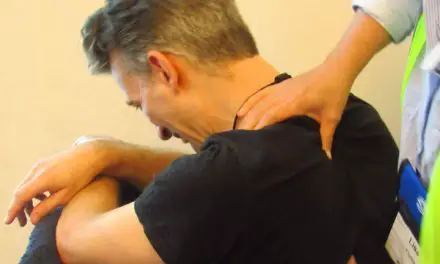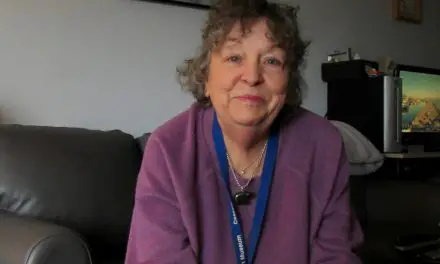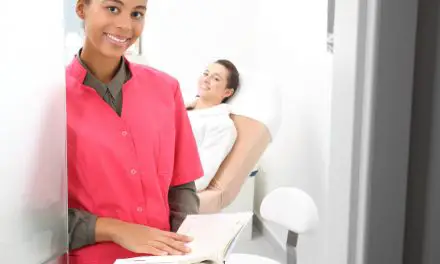Massage therapists can be an important entry point to access of care. With direct public access and discussion with patients about their pain and life challenges, massage therapists will often hear patients’ problems first.
By Sandy Hilton and Sarah Haag
A pelvic health physical therapist is trained in specific internal (vaginal and rectal) examination of specific anatomy and functional assessment. This training includes knowing how to screen and refer to medical professionals such as urogynecologists, vulvar dermatologists, and urologists. This training, evaluation, and the internal treatment options are within the scope of practice for physical therapists.
Internal treatment and genital assessment are not in the scope of practice for American massage therapists. However, working externally, massage therapists can make a difference in a person experiencing pelvic pain by restoring tolerance to touch and improving tissue mobility through the pathways of the pelvic nerves.
What do massage therapists need to know when working with a pelvic pain physical therapist?
Pelvic pain affects 10 to 20 percent of women in the U.S. alone. (5,6) It is different in that it affects not only the anatomical area of the pelvis, but can impact urination, bowel movements, intimacy and sitting, it also is hard to talk about with friends, families and providers. The onset can be sudden, with no warning and with no illness or injury.
Pelvic pain may also be persistent following direct pelvic injury from falls, childbirth, infection, or surgery – no more or less mysterious as pain in any location. The average time to get diagnosed and to a team of providers who can help is more than six years!
An important first step towards improved integrative and collaborative care for pelvic pain is in establishing communication between the health care team. It would be helpful to create local and regional collaborations between pelvic health physical and massage therapists interested in treating men and women with pelvic pain.
The pelvic motor and sensory nerves are from T12 through the sacral plexus. Techniques addressing spinal, abdominal, gluteal and lower extremity sensory/motor areas have potential to be helpful in decreasing the sensitivity in the pelvic nerves and provide support for a return to function.
People who are experiencing pelvic pain are often grasping at anything to feel better. Massage therapy is a wonderful treatment that can make people feel better, but it isn’t always enough to address the complexities of pelvic pain. Working with your local pelvic physical therapist can help your patients get the interdisciplinary healthcare that is most effective, but also what your patients deserve. Identifying and addressing any underlying pelvic issues that need to be addressed medically will only enhance the benefit of massage therapy.
6 Essential Steps to Networking With Pelvic Pain Physical Therapists:
1) Identify your local resources
a. Check the APTA.org website to find pelvic health PTs in your area.
b. Check with your local urologists and gynecologists.
2) Go to high quality, evidence-based education on the treatment of pain.
3) Take additional training in courses that identify pelvic pain specifically, look specifically for those that teach non-painful methods of working with pain. Pain is a protective response, using a painful technique to treat pain may be increasing the pain response.
4) Meet with your local pelvic health providers and let them know what you know. Establishing local teams and referral networks will help increase access and meet the ultimate needs of the person who is seeking pain relief.
5) Be active and involved on social media for pain treatment. Be an active part of the evolving conversation around how to treat pain. Come to interdisciplinary conferences on pain such as the San Diego Pain Summit, the International Pelvic Pain Society, and the International Association for the Study of Pain.
6) Follow the #Pelvicmafia on twitter and Facebook and let the world know you are part of the team working with a challenging population.
It makes sense in light of the challenge that health care teams include all fields, from athletic trainers to surgeons and massage therapists to dietitians. This allows for deeper levels of information and confirmation to people in pain that they have hope and there is a unified (and individualized) plan to help. Unfortunately, this utopia of health care doesn’t exist everywhere in the U.S. and each clinician, therapist and community is left to work out the details of how to make interdisciplinary care a population health event. These are lofty goals and ones that we feel strongly about.
Together, pelvic health physical therapists and interested massage therapists can work collaboratively to improve the health and well-being of people dealing with the challenges of pelvic pain.
References
1. Ahangari, A. Prevalence of Chronic Pelvic Pain Among Women: An Updated Review. Pain Physician. 2014; 17:E141-E147.
2. Latthe P, Latthe M, Say L, Gülmexoglu M, Khan K. WHO systematic review of prevalence of chronic pelvic pain: a neglected reproductive health morbidity. BMC Public Health 2006. 6:177 doi:10.1186/1471-2458-6-177.








